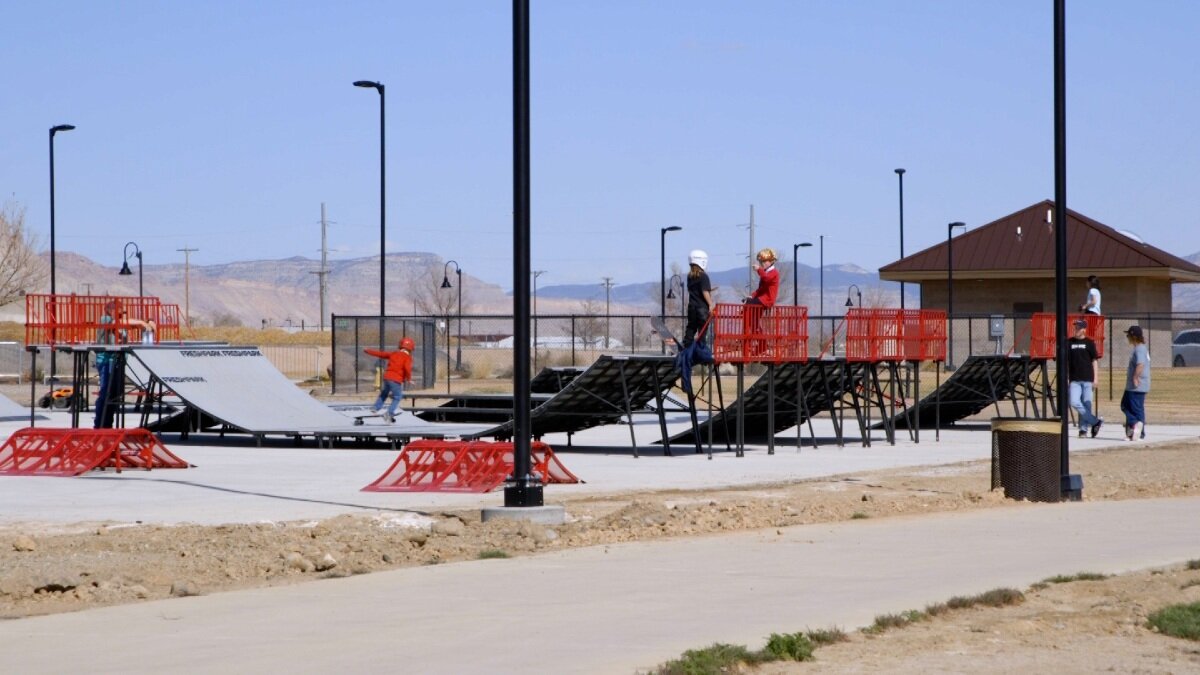Grand Junction's changing landscape makes more room for skaters

GRAND JUNCTION, Colo. – Located west of the dog park along the riverfront destination of Las Colonias Park lies a new amenity that skateboarders can call home: A 7,000 square foot skate park.
The new park, which features ramps, rails and a half-pipe, was built in response to the increased need for close-to-town recreation.
According to the Google COVID-19 Community Mobility Report, Mesa County experienced a 105% increase in park visitation since the beginning of the pandemic. The Parks and Recreation Department felt that it was important to respond to the growing use of the parks and began delivering on priorities listed in the Parks, Recreation, Open Space (PROS) Master Plan.
“Bike and skate parks were high on the list,” said Parks and Recreation Director Ken Sherbenou when discussing the master plan.
To save cost, the city organized the park using pre-built ramps, rails and boxes from California-based company Freshpark. These features were also selected because they are easily reorganized, unlike traditional skateparks in which the concrete structures are more or less permanent. Being that the park is so close to the amphitheater, the parks department saw a need to anticipate potential overflow parking, so the skate park needed to be capable of being moved elsewhere if needed.

Though the park offers an additional outlet for people to get outside and keep a distance from one another in the lingering months of the pandemic, some local skaters feel that the parks department’s efforts could have been better spent.
“It was needed in terms of keeping ourselves in the city’s ear,” said Josh Castaneda, owner of the local skateboard shop Mutual Friends. “We are pushing more towards concrete, something that has a little bit more longevity for our community.”
City officials approached Castaneda in recent months for his connection with the skating community and his history of hosting skateboarding events. He helped the city by researching modular skatepark manufactures and providing estimated costs. In the end, Freshpark was selected.
Grand Junction is home to four public skate parks: West Lake, Eagle Rim, Longs Memorial Skate Park (which is managed by the county), and now Las Colonias. The two other parks managed by the city, West Lake and Eagle Rim, are both concrete and are decades old.
Zach Duarte is a skateboarder and father of two. His 8-year-old son Oliver loves the new skate park at Las Colonias. Clean and free of graffiti, the skate park attracts a younger crowd, and it was built to do so. Much of the features are for beginners, offering new and unique challenges to those who are learning.

More seasoned skaters, however, are waiting for parks catered to their skills.
“We are glad that we can provide this new amenity, but we know it’s not meeting the needs of the advanced and larger skating community wants to see,” Sherbenou said.
Some even believe that a larger skate park that attracts all skating levels could lead to additional tourism revenue.
“This is the biggest place between Salt Lake and Denver,” Duarte said of Grand Junction.
“This [a larger skate park] is going to pull people to this location to want to come here, want to stay, want to spend their money, so absolutely a good skatepark can bring in revenue,” he added.
In 2014, the city approved a master plan for Matchett Park, currently a sparsely developed field off Paterson Road consisting of a disc golf course. Through various community meetings and approvals, the final master plan was drawn to include a new skate park next to the proposed recreation center. This skate park is estimated to cost $1.5 million. The new Las Colonias skate park, for comparison, only cost the city $100,000.

There is still hope for the million-dollar project, according to Sherbenou. On March 11, the Grand Junction Parks and Recreation department stated their official stance in support of ballot measures 2A and 2B in upcoming vote in April. These ballot measure seek to legalize the sale of recreational and medical marijuana in the city, which would help the parks department fulfill priorities in the PROS masterplan from the influx of tax revenue.
